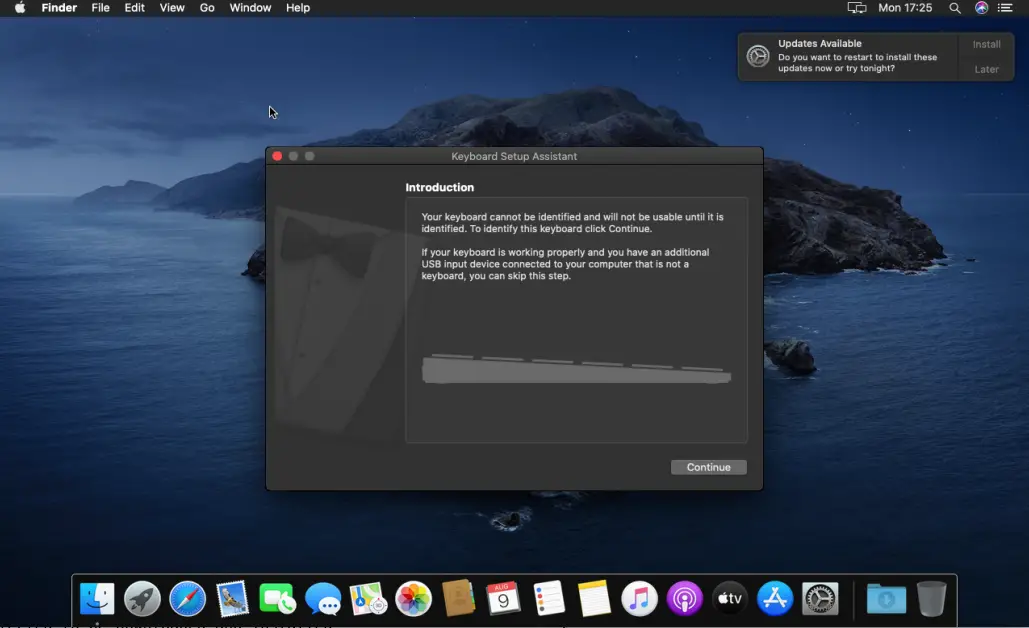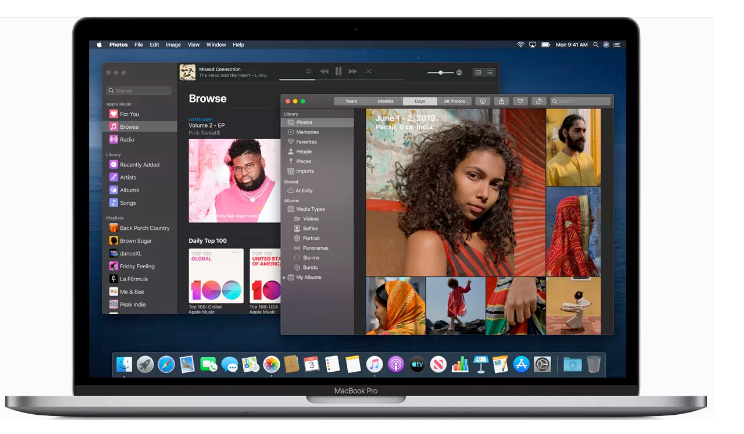
- MACOS CATALINA INSTALL TIME MAC OS X
- MACOS CATALINA INSTALL TIME MAC OS
- MACOS CATALINA INSTALL TIME DOWNLOAD
- MACOS CATALINA INSTALL TIME FREE
When it’s finished, your Mac will restart and it will look like a brand new Mac. Press Continue and choose the drive you just erased and re-formatted as the destination. When Disk Utility has finished erasing the disk, quit it to return to the macOS Utilities screen. If you have an older Mac with a mechanical hard drive or Fusion Drive, choose whichever one you want to use. If you have a recent Mac with an SSD startup disk, select APFS. Give your startup disk a name, then choose a format. When Disk Utility launches, choose the Eras tab then select your startup volume (probably called Macintosh HD).  When you see the macOS Utilities screen appear, choose Disk Utility. When you see the options for booting appear on screen, choose the installer disk you just created. Restart your Mac while holding down the Option key.
When you see the macOS Utilities screen appear, choose Disk Utility. When you see the options for booting appear on screen, choose the installer disk you just created. Restart your Mac while holding down the Option key. 
 Plug your USB stick or external hard drive into your Mac, if it’s not plugged in already. Now you've made a backup and created a bootable installer, it's time to actually install the new macOS. Follow these easy steps to clean install macOS Catalina on your Mac. Your USB stick or external hard drive is now a bootable Catalina installer, so keep it safe. Now, it’s time to clean install macOS Catalina. Once you see ‘Done’ in Terminal you can quit it. Press Return and wait for the word Done to appear in Terminal. Type: sudo /Applications/Install\ macOS\ Catalina\ Beta.app/Contents/Resources/createinstallmedia -volume /Volumes/Untitled -applicationpath /Applications/Install\ macOS\ Catalina\ Beta.app where ‘Untitled’ is the name of your USB stick or external hard drive. Launch Terminal from Applications>Utilities. However, if you’re comfortable using Terminal, you can do it like this: The easiest method for creating a bootable installer is to use DiskMaker X.
Plug your USB stick or external hard drive into your Mac, if it’s not plugged in already. Now you've made a backup and created a bootable installer, it's time to actually install the new macOS. Follow these easy steps to clean install macOS Catalina on your Mac. Your USB stick or external hard drive is now a bootable Catalina installer, so keep it safe. Now, it’s time to clean install macOS Catalina. Once you see ‘Done’ in Terminal you can quit it. Press Return and wait for the word Done to appear in Terminal. Type: sudo /Applications/Install\ macOS\ Catalina\ Beta.app/Contents/Resources/createinstallmedia -volume /Volumes/Untitled -applicationpath /Applications/Install\ macOS\ Catalina\ Beta.app where ‘Untitled’ is the name of your USB stick or external hard drive. Launch Terminal from Applications>Utilities. However, if you’re comfortable using Terminal, you can do it like this: The easiest method for creating a bootable installer is to use DiskMaker X. MACOS CATALINA INSTALL TIME MAC OS
Launch Disk Utilities and Erase the Drive or USB stick, formatting it as Mac OS Extended (Journaled) or APFS and selecting GUID partition map if a selection is available. Go to Applications>Utilities and launch Disk Utility. Grab a USB stick with a capacity of at least 16GB, or an external hard drive or USB. It’s much better to create a dual boot system when you run the beta. If you’re clean installing the beta (and, by the way, that’s not something I would recommend. MACOS CATALINA INSTALL TIME DOWNLOAD
If you’re reading this after Catalina ships, you can download it from the Mac App Store and then choose Quit when the installation starts. Create a bootable installer of macOS Catalina You can use Apple’s Notes app to make notes, as long as you sync them with iCloud. And you should make sure you have a copy of any licence codes that you’ll need when you reinstall applications. You should also make notes of settings for apps you use regularly – screen grabbing them is a good way to do that. Just make sure you have a complete, preferably bootable, copy of your current installation. You can use Time Machine, another backup app, or a cloning tool. You’re going to be erasing your startup drive completely, so you need a complete backup of everything. You must backup your Mac before you do anything else.
When it’s finished either press Remove to get rid of all the files it recommends, or choose Review to look through what it’s found and decide for yourself what to delete and what to keep. MACOS CATALINA INSTALL TIME FREE
Download and install CleanMyMac - try a free edition of the app here. You can expect to free up tens of gigabytes of space, including old apps, and their leftovers. There are many free and paid tools to clean junk but the quickest option is to run CleanMyMac X. We support operating systems that not even Microsoft and Apple themselves support anymore, such as macOS X on PowerPC Macs, and RetroArch being available on Windows OSes as far back as Windows 95.Tip: Clear out the junk before installationīefore the clean installation of macOS 10.15 Catalina it’s recommended that you first delete junk and dusty files from the current macOS. MACOS CATALINA INSTALL TIME MAC OS X
RetroArch can run on the usual platforms like Windows, Mac OS X and Linux, but it stands alone in that it can support far more platforms beyond just that.







 0 kommentar(er)
0 kommentar(er)
